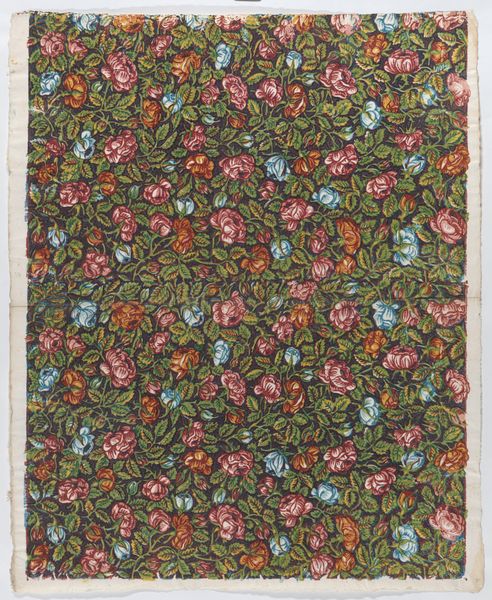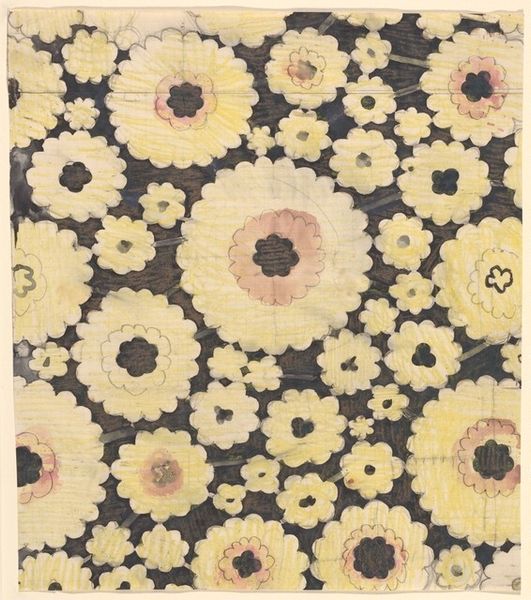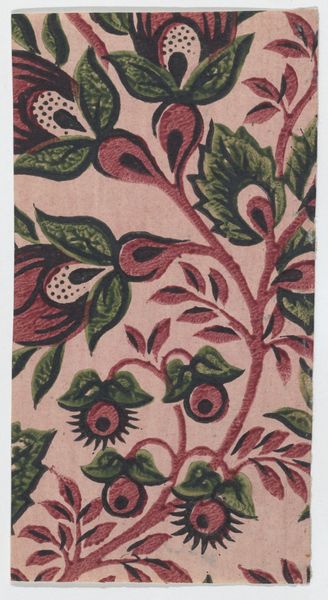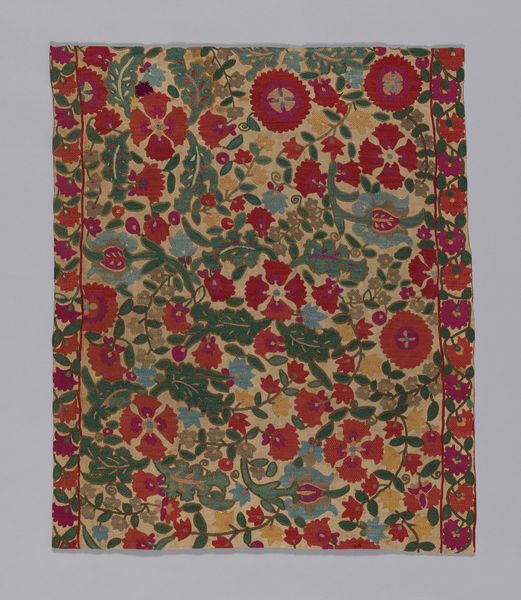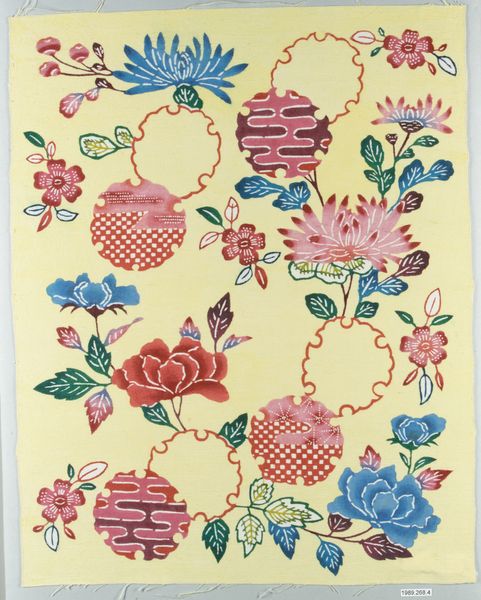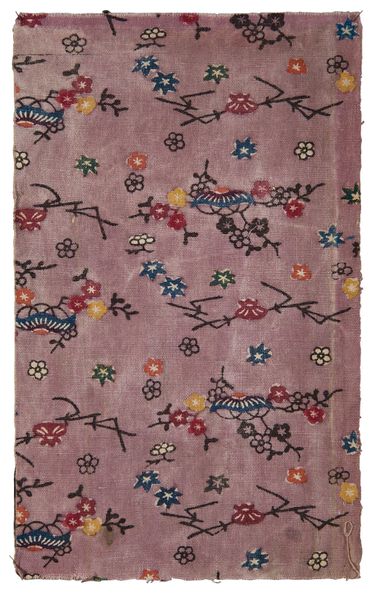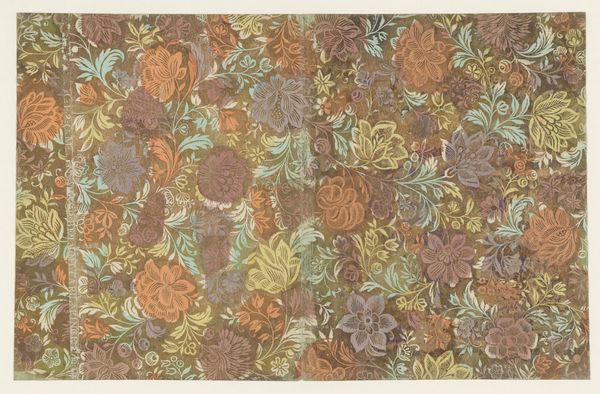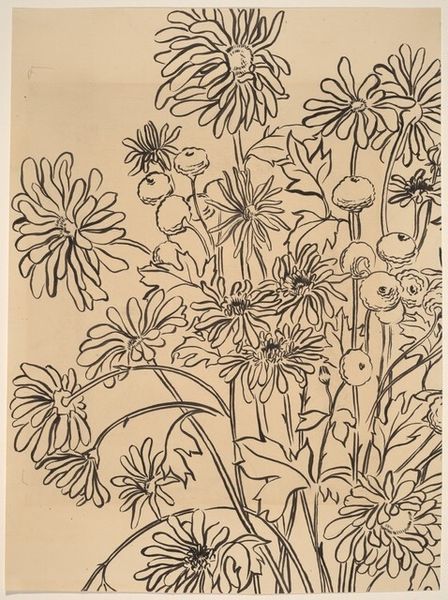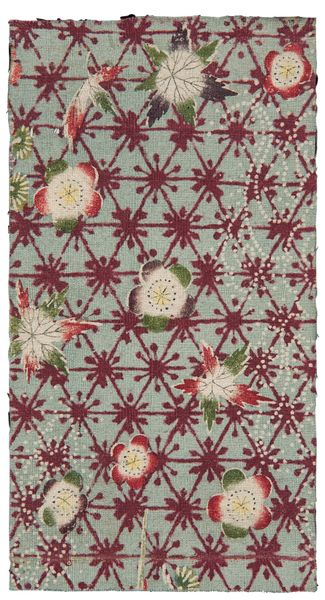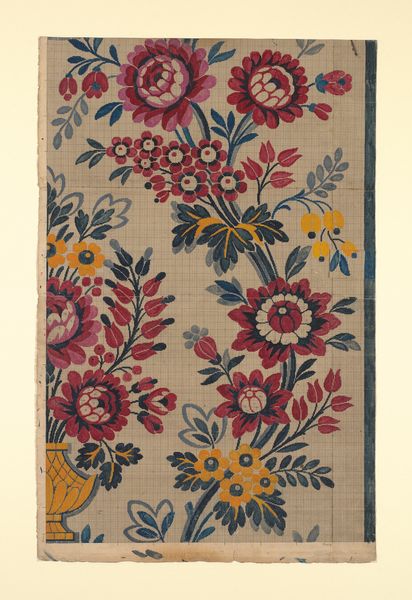
Green-ground fragment decorated with floral arabesques and hollyhocks c. 19th century
0:00
0:00
mixed-media, print, textile
#
mixed-media
#
organic
# print
#
textile
#
folk-art
#
organic pattern
#
orientalism
#
decorative-art
Dimensions: 10 3/16 × 7 3/4 in. (25.88 × 19.69 cm) (overall)
Copyright: Public Domain
Curator: This is a fragment of textile art from around the 19th century, currently residing here at the Minneapolis Institute of Art. Its title is "Green-ground fragment decorated with floral arabesques and hollyhocks". Editor: Oh, I see why it’s called a "fragment"—it's a piece, just a glimpse. My first thought: botanical bedlam! It's got that vibrant, slightly chaotic energy of a flourishing garden, almost too much going on, but somehow harmonious. Curator: Absolutely. I'd say it pulls heavily from the decorative arts and what we might term Orientalism. What is particularly interesting here is how we can use postcolonial and feminist perspectives to unpack orientalist visual strategies in which the floral patterns have complex semiotic weight that references gender, cultural identity, and nature’s exploitation. Editor: I can definitely see the threads – literally and figuratively – of that kind of interpretation. To me it feels deeply rooted in the act of making, the almost obsessive detail speaking of time invested, perhaps by a woman in a domestic sphere. I get a sense of storytelling interwoven with the visual pattern. Curator: The swirling arabesques are very interesting. They draw from Islamic art’s complex mathematical patterns, often symbolizing infinite energy and the divine. The use of the color green, too, gains complexity when considered alongside similar instances throughout history, perhaps as a signal of ecological narratives or representations of Irish nationalism. The floral elements themselves were quite deliberate—think about floriography as a whole language. Editor: So it’s more than just pretty flowers, then! Thinking of its "fragment" status, I wonder what kind of lives the original textiles lived and how our interaction with a fragment affects our understanding of it, its context and the message that the original creator intended to send. Do we lose or do we perhaps create new, interpretive meaning with each isolated encounter? I am going to leave contemplating that now. Curator: An intriguing question. Thinking about it this way allows us to consider not only what's present on the textile but also what narratives are missing, altered, or suppressed due to its fragmented nature and colonial contextualization. Editor: A final thought? It’s like a secret garden caught on a piece of cloth. Makes me want to step into the wild abandon of it.
Comments
No comments
Be the first to comment and join the conversation on the ultimate creative platform.
